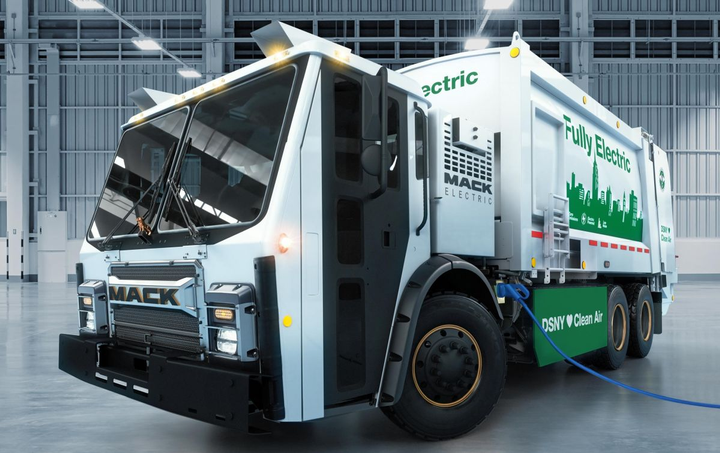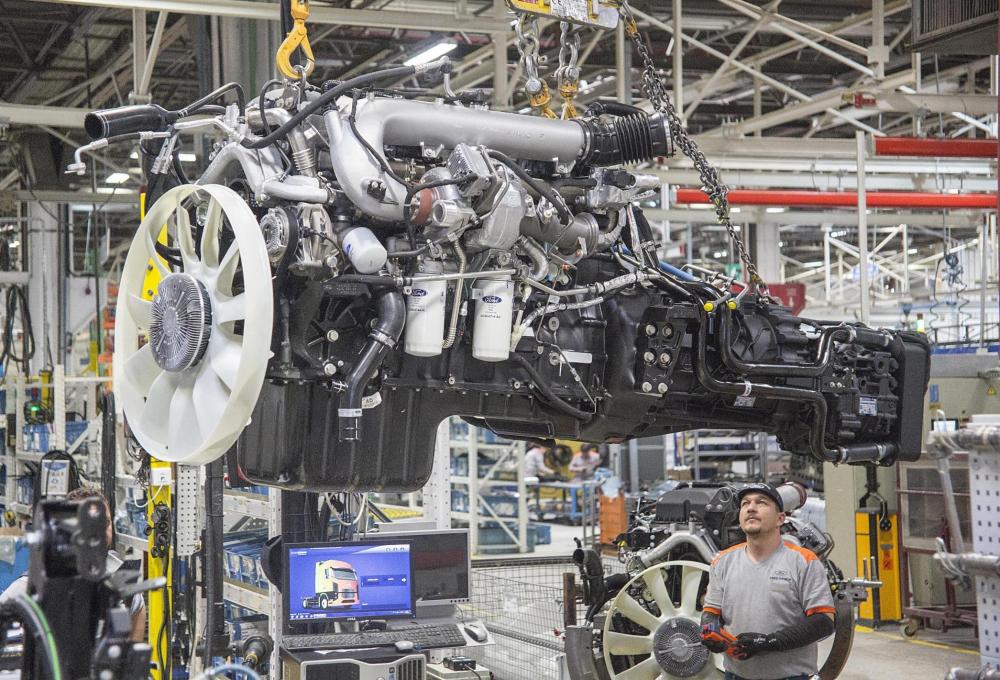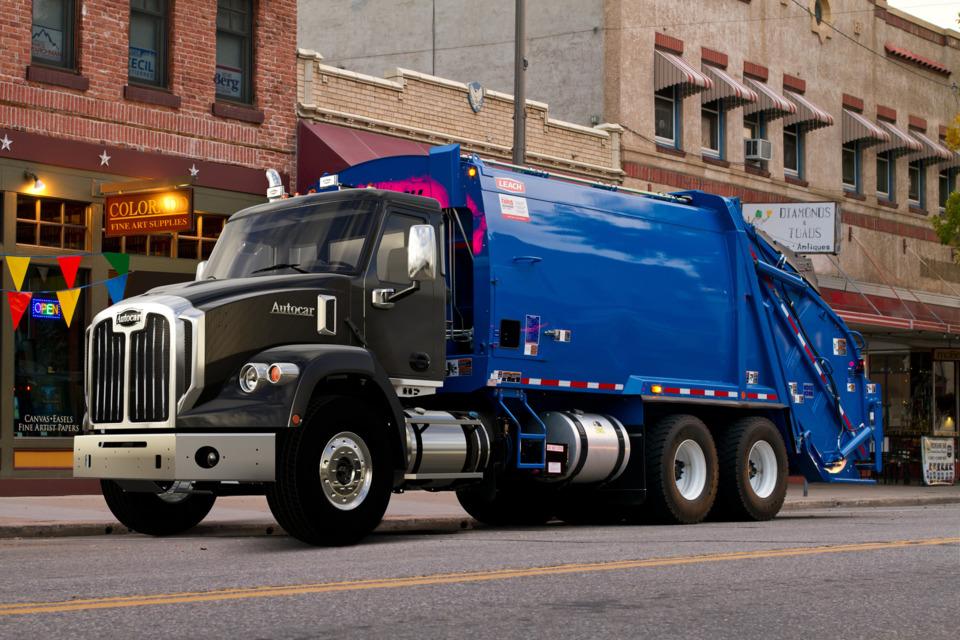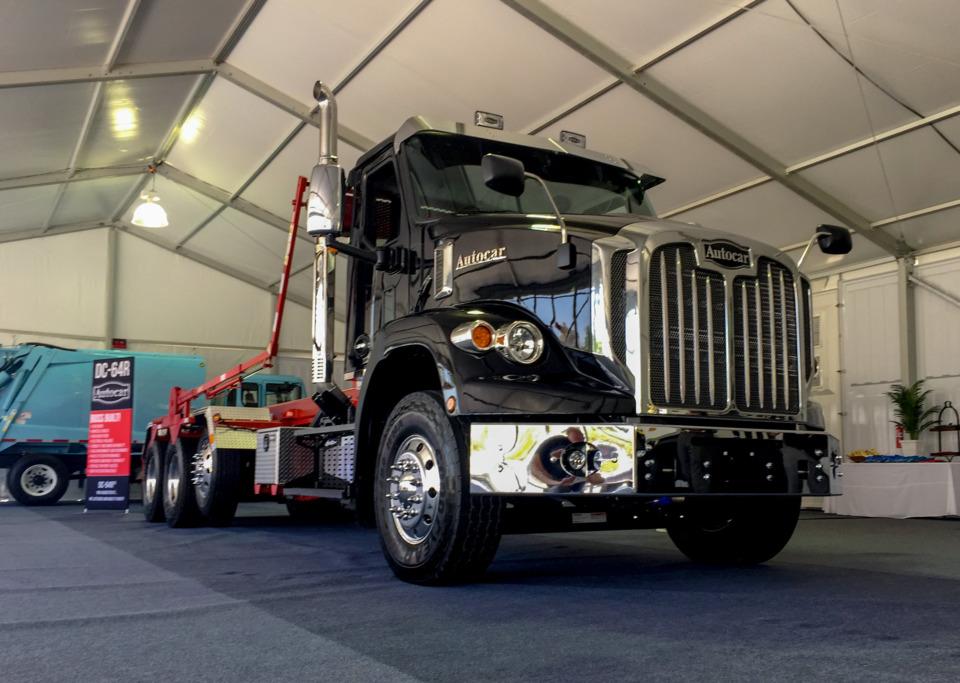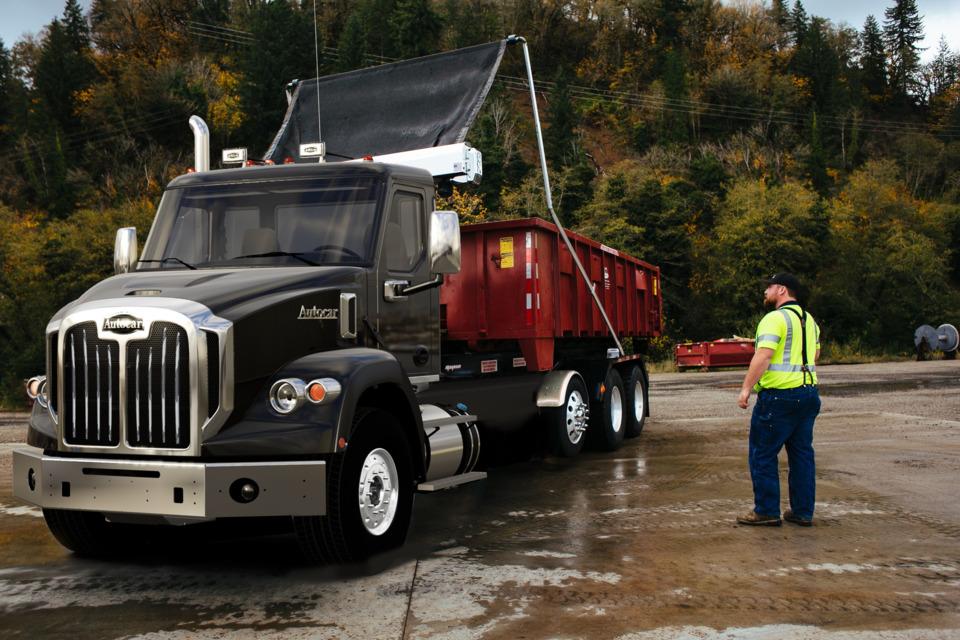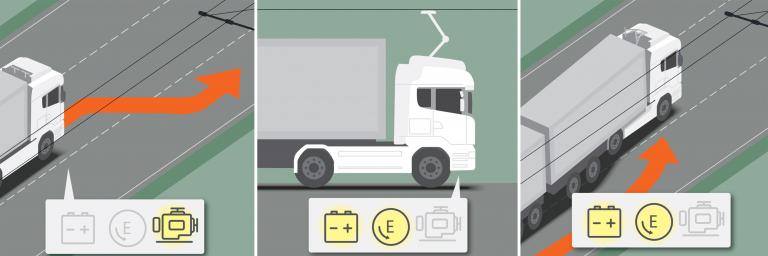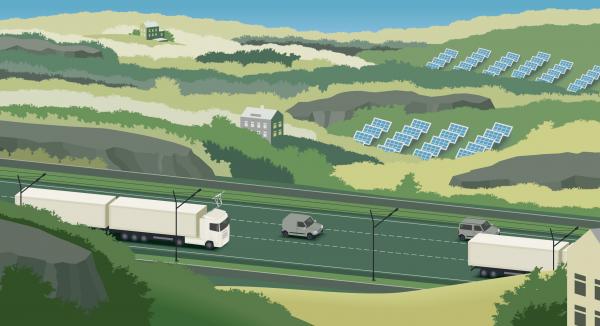
kscarbel2
Moderator-
Posts
18,545 -
Joined
-
Days Won
112
Content Type
Profiles
Forums
Gallery
Events
Blogs
BMT Wiki
Collections
Store
Everything posted by kscarbel2
-
You're right of course. The problem is this dealer network will need to reboot itself (get pumped up) so as to effectively take this ball and run with it. I assume they have been doing direct sales to Waste Management and the larger fleets (as the Mack factory branches did). For that reason, the dealers have been doing more after-sales support than selling. Now, this business model will have the change.
-
No, spoke to them on the phone.
-
The electric LR incorporates the same Volvo technology already being used in Europe. https://www.bigmacktrucks.com/topic/55770-volvo’s-first-electric-trucks-put-to-work/
-
They will......already confirmed, with X15 power.
-
Relating to chassis articulation, I pay more attention to the crossmembers, how rigid the crossmembers as selected make the frame.
-
I understand that, but I still don't care for the cab-over-engine U Series' grille on a MY2020 DC Series conventional cab truck, specifically the extensions on the left and right side. I would rather see a classic yet updated DC grille, in two different widths depending on cooling package requirements.
-
I like the general theme of the grille, but not the extensions on the left and right side.
-
AxleTech has its origins as the North American Off Highway and European Specialty Division of Rockwell International. https://www.bigmacktrucks.com/topic/38346-axletech-international-acquired-by-the-carlyle-group/
-
Heavy Duty Trucking (HDT) / May 8, 2019 Meritor, Inc. has entered into an agreement with an affiliate of The Carlyle Group, a global investment firm, under which Meritor will acquire AxleTech for approximately $175 million in cash, adjusted for changes in working capital at closing and subject to regulatory approvals and customary closing conditions. The transaction advances Meritor’s M2022 objectives to accelerate global sales and growth by leveraging the company’s core competencies to grow strategically in adjacent markets. The addition of AxleTech enhances Meritor’s growth platform, bringing a highly complementary global product portfolio across the off-highway, defense, specialty, and aftermarket segments, according to the company. AxleTech’s offerings include a full product line of independent suspensions, axles, braking solutions, and drivetrain components. These capabilities will enable Meritor to offer global customers a wider array of differentiated products and solutions while further diversifying the company’s portfolio. Headquartered in Troy, Mich., AxleTech is a privately-held leading technology company that designs, engineers, manufactures, sells, and services drivetrain systems and components, with a focus on off-highway applications. AxleTech generated $248 million in revenue in calendar-year 2018. “We are delighted to welcome AxleTech back to the Meritor family. The addition of AxleTech is a compelling value-creating opportunity to broaden our position in attractive, adjacent markets and advances our M2022 strategy," said Jay Craig, Meritor’s CEO and president. “Meritor’s technical expertise, operational excellence and proven track record will be a powerful platform to accelerate growth. Our product portfolios are highly complementary and we share a commitment to our people and customers. We look forward to realizing the full benefits of the transaction by serving as a premier supplier to our global customers and enhancing shareholder value.” Meritor expects to realize more than $15 million in annual cost synergies by fiscal year 2022, through operating, productivity, and manufacturing efficiencies. The combination of AxleTech’s offerings with Meritor’s on-highway leadership will position the company to accelerate growth and deliver an enhanced value proposition to new and existing global customers. Upon completion of the transaction, AxleTech will operate within Meritor’s Aftermarket, Industrial, and Trailer segment. The transaction is currently expected to close in the fourth fiscal quarter, subject to regulatory approvals and customary closing conditions.
-
Mack debuts electric-powered waste truck Truck News / May 8, 2019 LAS VEGAS, Nevada – Mack Trucks showcased its LR battery-electric refuse truck at WasteExpo. The demonstration model will begin real-world testing next year with the New York City Department of Sanitation. “The Mack LR BEV is the latest example of Mack’s leadership within the refuse and recycling industry,” said Jonathan Randall, Mack Trucks senior vice-president, North American sales and marketing. “Built on our decades of experience in powertrain innovation, the electric LR delivers a powerful yet quiet, zero-emission solution designed to tackle one of the most demanding applications in one of the largest cities in the world.” The truck features an integrated electric powertrain, consisting of two 130-kW motors, which produce 496 hp and 4,051 lb.-ft. of torque from zero rpm. It also features a two-speed Mack Powershift transmission. “New York City, and DSNY in particular, is a world leader when it comes to testing the latest technologies to help us reduce our environmental footprint,” said New York City DSNY deputy commissioner Rocky DiRico. “We’re proud to be the first Mack customer to test this exciting new technology, and we look forward to continuing to work with Mack throughout this project.” Mack says refuse applications are ideal for electric-powered trucks, as they run pre-determined routes and return to home after every shift. Frequent starts and stop provide significant regenerative braking opportunity to recapture energy. Mack LR BEV Specifications: Electric Motors: Two Alternating Current motors, 130 kW each 370kW (496 hp) total peak power, 260 kW (349 hp) continuous power 4,051 lb.-ft. of torque Traction voltage: 600 volts Batteries: Four NMC Lithium-Ion Batteries (Lithium Nickel Manganese Cobalt Oxide Charging System: SAE J1772 compliant Up to 150kW charging power at 200 amps maximum current 600-750 volts, depending on state of battery charge Regenerative braking system Accessory Power: 12 volt, 24 volt and 600 volt circuits Transmission: Two-speed Mack Powershift Axles: Mack FXL20 20,000-lb. front axle Mack S522R 52,000-lb. rear axles Body: Heil 25-yard DuraPack 5000 rear loader
-
Heavy Duty Trucking (HDT) / May 8, 2019 Volvo Group subsidiary Mack Trucks unveiled its Mack LR battery-electric vehicle (BEV) at WasteExpo 2019. Combining the design of the Mack LR model with a fully electric Mack drivetrain, the demonstration model will begin real-world testing in 2020 in the demanding operations of the New York City Department of Sanitation (DSNY). “The Mack LR BEV is the latest example of Mack’s leadership within the refuse and recycling industry,” said Jonathan Randall, Mack Trucks senior vice president, North American sales and marketing. “Built on our decades of experience in powertrain innovation, the electric LR delivers a powerful yet quiet, zero-emission solution designed to tackle one of the most demanding applications in one of the largest cities in the world.” The Mack LR BEV is powered by Mack’s integrated electric powertrain consisting of two 130-kW motors producing a combined 496 peak hp and 4,051 lb.-ft. of torque available from zero RPM. Power is sent through a two-speed Mack Powershift transmission and put to the ground by Mack’s proprietary S522R 52,000-pound rear axles. The Mack LR BEV features a copper-colored Bulldog hood ornament, signifying that it’s an electric vehicle. All of the LR BEV’s accessories, including the hydraulic systems for the Heil DuraPack 5000 body, are electrically driven through 12V, 24V, and 600V circuits. Four NMC lithium-ion batteries (Lithium Nickel Manganese Cobalt Oxide) are charged via a 150kW, SAE J1772-compliant charging system. As one of Mack’s largest customers, DSNY was an ideal choice to test the first LR BEV model in a real-world application. DSNY is the world’s largest sanitation department, with its 10,000 employees collecting more than 12,000 tons of refuse and recyclables each day. DSNY is also a sustainability innovator and has initiated several programs designed to reduce waste sent to landfills, as well as cut emissions. “New York City, and DSNY in particular, is a world leader when it comes to testing the latest technologies to help us reduce our environmental footprint,” said New York City DSNY Deputy Commissioner Rocky DiRico. “We’re proud to be the first Mack customer to test this exciting new technology, and we look forward to continuing to work with Mack throughout this project.” Even as electromobility technology and supporting infrastructure continues to develop, refuse and recycling collection represents an ideal application for BEVs because of the potential to deliver the most value to customers. Collection vehicles operate on predetermined routes and return home every off shift, helping eliminate concerns about range and finding a location to charge. The truckmarker notes that the frequent starts and stops, which can occur thousands of times per shift, also provide a significant regenerative braking opportunity to recapture energy. Fully electric trucks like the Mack LR BEV provide a number of benefits, including zero emissions and the potential for improved environmental sustainability. In addition, fully electric trucks produce significantly less noise, enabling nighttime operation, a particularly attractive option for refuse operators in urban environments, according to Mack. . .
-
GM plans to sell Lordstown plant to electric truck maker Michael Wayland, Automotive News / May 8, 2019 UAW wants GM to keep the plant and assign a new product General Motors plans to sell its idled Lordstown plant in Ohio to Workhorse Group Inc., a little known electric truck and drone maker in the state, according to President Donald Trump. Trump on Wednesday tweeted that he "just spoke" to GM CEO Mary Barra and "subject to a UAW agreement etc.," the Detroit automaker will sell the plant to "Workhorse, where they plan to build Electric Trucks." GM confirmed in a later statement it is in "discussions" with Workhorse and an "affiliated, newly formed entity" to sell the plant. “We remain committed to growing manufacturing jobs in the U.S., including in Ohio, and we see this development as a potential win-win for everyone,” Barra said in the statement. "Workhorse has innovative technologies that could help preserve Lordstown’s more than 50-year tradition of vehicle assembly work.” Workhorse is based in Loveland, Ohio, near Cincinnati. Its chairman, Raymond Chess, spent 37 years at GM in a variety of roles that included "global product responsibility for all crossover vehicles," his company biography said. "The move has the potential to bring significant production and electric vehicle assembly jobs to the plant," the GM statement said. "Upon final agreement, the entity, led by Workhorse founder Steve Burns, would acquire the facility. Workhorse would hold a minority interest in the new entity." “This potential agreement creates a positive outcome for all parties involved and will help solidify the leadership of Workhorse’s role in the EV community,” Workhorse CEO Duane Hughes said in the GM statement. “The first vehicle we would plan to build if we were to purchase the Lordstown Complex would be a commercial electric pickup, blending Workhorse’s technology with Lordstown’s manufacturing expertise," Burns said in the statement. It was unclear when the parties expect to complete negotiations. "Upon final agreement with all parties, work could begin immediately to prepare the facility for new production," the statement said. The UAW was unimpressed by the announcement, contending that GM instead should assign a new product to the facility. “In response to General Motors’ announcement today, the UAW’s position is unequivocal: General Motors should assign a product to the Lordstown facility and continue operating it,” UAW Vice President Terry Dittes, director of the UAW-GM Department, said in a statement. GREAT NEWS FOR OHIO! Just spoke to Mary Barra, CEO of General Motors, who informed me that, subject to a UAW agreement etc., GM will be selling their beautiful Lordstown Plant to Workhorse, where they plan to build Electric Trucks. GM will also be spending $700,000,000 in Ohio... — Donald J. Trump (@realDonaldTrump) May 8, 2019 Other GM plant investments Trump also tweeted that GM plans to spend $700 million in Ohio in three separate locations, creating 450 jobs. GM confirmed plans to add jobs at its plants in Toledo, Parma and Moraine. "I have been working nicely with GM to get this done," Trump tweeted. "Thank you to Mary B, your GREAT Governor, and Senator Rob Portman. With all the car companies coming back, and much more, THE USA IS BOOMING!" The Lordstown plant, which had been producing the compact Chevrolet Cruze, was idled in March. Trading of Workhorse shares (NASDAQ: WKHS) was halted for volatility at $1.42 after the president's tweet, and ended the day tripling to close at $2.65. Workhorse's website also crashed for a time. The company went public in 2010. ....in 3 separate locations, creating another 450 jobs. I have been working nicely with GM to get this done. Thank you to Mary B, your GREAT Governor, and Senator Rob Portman. With all the car companies coming back, and much more, THE USA IS BOOMING! — Donald J. Trump (@realDonaldTrump) May 8, 2019 Business opportunities Lordstown Assembly was one of five North American plants that GM announced plans to idle this year and potentially close in November to reduce overcapacity. GM has consistently said that it “would consider any that are truly viable business opportunities” for the impacted facilities. The automaker, as first reported by Automotive News, had discussions with Fiat Chrysler Automobiles NV for its Detroit-Hamtramck Assembly plant in Michigan. Barra said in January that there were also talks with Tesla Inc., but Tesla was “not interested in our GM work force represented by the UAW, so really it’s a moot point.” For a startup to take over a 6.2 million-square-foot facility with 275,000 units of capacity would likely be a difficult task. In March, Trucks.com reported Workhorse was having financial issues and it was postponing “plans for an electric pickup and aircraft to focus on battery-powered lightweight vans.” In 2017, Trucks.com said Workhorse built a pre-production work truck, called the W-15, in about nine months. The vehicle had an all-electric range of 80 miles. Workhorse on Tuesday reported first-quarter sales of $364,000, down from $560,000 in the first quarter of 2018. It reported a net loss of $36.5 million in 2018. The company, according to its 2018 annual filing to the U.S. Security and Exchange Commission, has incurred net losses of $141.6 million from February 2007 through 2018.
-
They're making a big deal about the rails........... "The Autocar DC-64R (the R stands for refuse) is the first truck to feature ultra-high-strength 160,000 PSI steel frame rails, which Autocar says is 24 percent stronger and lighter than the rails on other trucks on the market, and eliminates the need for frame liners in nearly all refuse applications." https://www.ccjdigital.com/autocar-debuts-first-new-conventional-in-three-decades/
-
Yes Nice ZF transmission featuring a retarder too. Ford’s own proprietary AMT enters production in 2020.
-
Ford Trucks International / May 7, 2019 Boost your strength with the 500 PS/2500 Nm Ecotorq engine, the heart of the Ford Trucks F-MAX: superior performance that you can feel behind the wheel. .
-
Autocar Rolls out New Conventional Truck Model Heavy Duty Trucking (HDT) / April 7, 2019 America’s self-proclaimed oldest truck builder has a new conventional model hitting the market. The Autocar DC-64R is a completely new conventional truck purpose-built from the ground-up for severe-duty refuse applications, according to the OEM. The company added that the new truck features several innovations that make it especially suited to refuse-hauling applications. “The DC-64R is the direct result of the requests, insights, data, and guidance we received from many waste haulers across the industry,” said Autocar President James Johnston. "We could not have engineered a truck this good without all their feedback that resulted in innumerable improvements. We’re grateful for their help and proud to bring to this market a truck that is honestly customer-built.” The DC model’s cab is totally new and was designed by Autocar for productivity, durability and safety in the refuse industry. “The workspace of the cab maximizes productivity for drivers,” explained Managing Director Eric Schwartz. “From the biggest guys to petite women, with everything visible and within easy reach. The cab also easily fits three, so work crews can get to and from their routes comfortably. Our raked windshield provides exceptional visibility for safety. And the interior uses authentic materials like a full steel structure inside the dashboard and aluminum sheets as dash panels. Even the interior door handles are aluminum tubes, not plastic. The totally new cab structure is built from a combination of steel, judiciously chosen aluminum components, and corner castings to withstand years of refuse abuse.” Autocar said the DC-64R is the first truck ever built to feature frame rails made from ultra-high-strength 160,000 PSI steel, which the company said is 24% stronger and lighter than the rails on other trucks on the market and completely eliminates the need for frame liners in nearly all refuse applications. The primary benefit for the waste hauler is a significant weight savings that directly increases effective payload – and therefore, profitability. “One of the things we’re proudest of is our totally upgraded electric system to resist the worst the garbage business can dish out," Johnston said. “The DC also brings our customers the Autocar Always Up display, with one-touch diagnostics. It actually tells the operator or technician what fault has occurred and shows them how to fix it.” The DC-64R is the first new conventional truck for the Autocar brand in 31 years. It joins the ACX and ACMD cabover trucks and the ACTT terminal tractor, as the OEM’s fourth in its model lineup. The new truck also represents the rebirth of Autocar’s DC, first introduced by The Autocar Company in 1939 as its premier severe-duty, diesel-powered work truck. The DC is also the first of Autocar’s lines to carry the recently announced Autocar bowtie logo, reborn on its 100th birthday. Autocar was created in 1899, just one year after the Winton Motor Vehicle Co. built the first truck in North America. Over the years, Autocar was a key player in the trucking industry and introduced numerous innovations. It changed owners a number of times before being acquired by Volvo in 1981 as part of the acquisition of White Motor. In 2001, Autocar became a subsidiary of Grand Vehicle Works Holdings LLC of Union City, Indiana, after Volvo Trucks North America spun it off. Volvo was required to sell its low-COE truck business as part of the deal to acquire Mack Trucks/Renault RVI.
-
Autocar Trucks launches DC-64R "Always Up" conventional truck Autocar / May 7, 2019 The Autocar DC-64R is a conventional truck that is suited for refuse-hauling. Autocar Trucks announces the launch of the Autocar DC-64R, a conventional truck for severe-duty refuse applications. Autocar’s guiding mission is to build trucks to be “Always Up”, that is, to stay in service despite the challenges of severe-duty applications. The Autocar DC-64R (the R stands for refuse) is suited for refuse-hauling. James Johnston, president, Autocar, said “The DC-64R is the direct result of the requests, insights, data, and guidance we received from many waste haulers across the industry. We could not have engineered a truck this good without all their feedback that resulted in innumerable improvements. We’re grateful for their help and proud to bring to this market a truck that is honestly customer-built.” Eric Schwartz, managing director, Autocar Trucks, said “The DC’s cab is totally new and was designed by Autocar from the beginning for exceptional productivity, durability -- and especially safety -- in the refuse industry. The workspace of the cab maximizes productivity for drivers… with everything visible and within easy reach. The cab also easily fits three, so work crews can get to and from their routes comfortably. Our unique raked windshield provides exceptional visibility for safety. And, true to our Always Up mission and Autocar’s legendary toughness, the interior uses authentic materials like a full steel structure inside the dashboard and aluminum sheets as dash panels. Even the interior door handles are aluminum tubes, not plastic. The totally new cab structure is built from a combination of steel, judiciously chosen aluminum components, and corner castings to withstand years of refuse abuse.” According to the company, the Autocar DC-64R is the first truck ever built to feature 160,000 PSI steel frame rails. The primary benefit for this waste hauler is a significant weight savings that directly increases effective payload. Johnston continued, “One of the things we’re most proud of – because it will make a big difference in our customers’ business – is our totally upgraded electric system to resist the worst the garbage business can dish out. The DC also brings our customers the Autocar Always Up display, with game-changing ‘one-touch diagnostics’. It actually tells the operator or technician what fault has occurred and shows them how to fix it. It gets trucks back into service and making money faster than anything anyone has had before.” Schwartz added, “Everything about this truck is designed to solve problems our customers have with other trucks and achieve our goal of Always Up. There are so many other innovations, from the engines up to 500 HP that are hundreds of pounds lighter, to a real breakthrough in body integration. This truck is just revolutionary in the ways it will help waste haulers serve their customers and create ROI.” The company revealed it has already accepted firm orders for production of the DC-64R at its Birmingham, Alabama factory, starting at the end of this summer. According to the company, the DC-64R is the first conventional truck for the Autocar brand in 31 years, and it joins the ACX and ACMD cabover trucks, and the ACTT terminal tractor, as Autocar’s fourth line. The truck also represents the rebirth of Autocar’s DC, first introduced by The Autocar Company in 1939, as its severe-duty and diesel-powered work truck. The DC is also the first of Autocar’s lines to carry the Autocar bowtie logo, reborn on its 100th birthday. Johnston commented, “We’ve gone back to Autocar’s roots with the logo... It’s the perfect time to show that we are inspired by the best of our history to build something fantastic for the future.” .
-
Well first of all, truth be told, Dirtymilkman (Mark) who spends all his time jet setting around the world has never set foot in his MP10 Titan. Heir to the Marriott fortune, he has never worked a day in his life. As for MPG, if you had a driver and his exact clone operating two identical trucks under the same operating conditions under 80,000lb, the X12 would prove more economical than the X15.
-
Bob, following the global standard, that's a 32 metric ton bogie (70,548lb). I believe Ford does produce those in-house in Turkey. Before creating it's own proprietary unit, Ford was using the 32-ton Meritor MT32-610* planetary hub reduction axle on its vocational range. In China, for JMC production, they use planetary hub reduction axles produced by Fuwa. * https://www.meritor.com/-/media/Meritor/Products/sidebar-download-icons/SP18117-Axles-Europe.ashx?la=en&hash=130FEA292C5C0E074CAD522B233094C4 http://meritor-aftermarket.eu/catalogues/MC1404_Meritor_MT160_Hub Reduction_Web2.pdf
-
The truck we see here is obviously a short-nose set up for the X12. But if they've thought this through, there likely is a longer nose Autocar vocational engineered for the X15, for both dump and heavy-haul tractor applications. Only a fool would ignore that segment.
-
Paccar's huge mistake in the making is NOT offering the X12. Paccar was offering the ISX12. But that model has now been replaced with the X12, and Paccar refused to sign a purchase agreement with Cummins for the X12. So now, Paccar customers have no more "choice". It's the DAF-designed Paccar MX engine.....or nothing. Americans (and Australians) like "choice". I am seeing some T880 dumps with X15s, but c'mon, that's ridiculous overkill. The X12 would offer abundant power (350-500hp) with far better fuel economy.
-
Volvo Group Press Release / May 6, 2019 .
-
Scania Group Press Release / May 7, 2019 Zero carbon footprint, quieter vehicles, good driveability and no exhaust emissions. Continuous charging along electric roads has huge potential for heavy transport. On a busy highway, a truck with trailer is approaching a long section with pylons on the right side. The vehicle’s sensor detects that the traffic lane is now equipped with an electric contact line, and the driver pushes a button to raise a pantograph fitted on the cab’s roof. Within seconds, the cab turns almost completely silent: the combustion engine has stopped, and the electrical motor now powers the vehicle. A clean, safe and efficient technology Just a few years ago the thought that electrically-powered long haulage trucks could co-exist with passenger cars on ordinary highways would have been a vision of the future. But today, several projects are ongoing in Europe to test and evaluate this clean, safe and efficient technology. Governments and authorities in Germany, Italy and Sweden are actively supporting research projects, with the ultimate aim of building an electrification infrastructure that could cover parts of the highway network in Europe with this green technology. “Vehicle electrification is developing quickly” Scania’s view is that it will not be very long until the tipping point is reached where electrification for heavy transport will become a sound investment for transport operators. But as the company continues to invest in and develop electrified solutions, Scania is also pursuing other and more immediate paths to reach sustainable transport. Claes Erixon, Scania’s Executive Vice President Research and Development, says the company sees electric roads as one of several promising technologies that can make long-haul transport a sustainable future. “Vehicle electrification is developing quickly and with its environmental, social and cost benefits, it will play an important role in the shift to a fossil-free transport system,” he says. This is how it works: 1. Finding the eHighway A sensor checks whether the traffic lane is equipped with a contact line. Until now the truck has been powered by the combustion engine. Now, the driver raises the pantograph. 2. Connects to the contact line When connected, the pantograph transfers the energy directly to the electric motor, simultaneously charging the battery. During braking, electricity is generated as the flow of energy is reversed, charging the on-board battery. 3. Disconnects when overtaking When the truck is overtaking or is at the end of an electrified section, the pantograph lowers itself. The electrical motor continues to run on battery power for as long as possible. After overtaking the driver can return to the eHighway.
BigMackTrucks.com
BigMackTrucks.com is a support forum for antique, classic and modern Mack Trucks! The forum is owned and maintained by Watt's Truck Center, Inc. an independent, full service Mack dealer. The forums are not affiliated with Mack Trucks, Inc.
Our Vendors and Advertisers
Thank you for your support!




